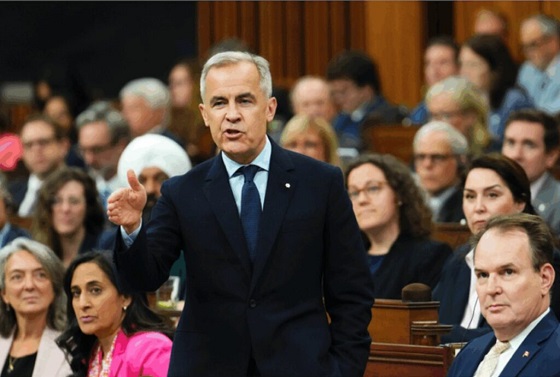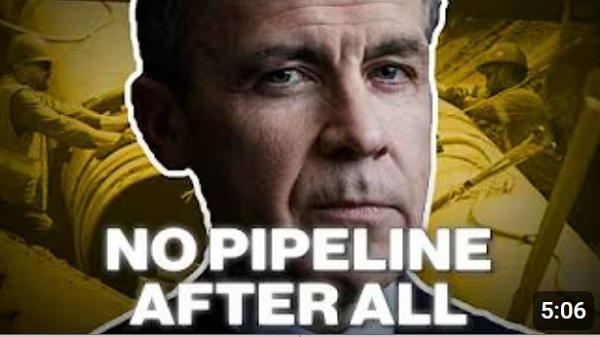Alberta
Update 16: Northwest Alberta wildfires (June 6 at 6 p.m.)

June 06, 2019
Weather conditions favourable for firefighters.
Wet, cooler weather has contributed to conditions that make it easier for fighting wildfires across the province. Rain continues to fall in many areas of Alberta while the High Level area experiences cool temperatures.
Approximately 4,800 evacuees remain displaced. Steen River and Trout Lake evacuees are now eligible for evacuation payments.
The following communities remain on evacuation alert:
- Keg River, Carcajou and all residents from the northern border of the County of Northern Lights to Township Road 922 (Notikewin Road)
- Hamlet of Sandy Lake
- Town of Slave Lake
- MD of Lesser Slave Lake, including Old Smith Highway, Mitsue, Poplar Lane, Fawcett Lake, Eben Road and Bayer Road
- Peerless Lake area of Peerless Trout First Nation
- Town of Manning and some surrounding areas
- Mackenzie County: everyone north and south of the Peace River from Township Road 1030 north to Township Road 1110, west of Range Road 120 to Highway 35 south and southeast of High Level, and east of Range Road 180 (Blue Hills Road)
Mandatory evacuations remain in place for:
- Paddle Prairie Metis Settlement
- Some areas of Mackenzie County: west of Blues Creek, north of Highway 697, west of Blue Hills Road (RR 180) and north of Township Road 1030 and La Crete Ferry Campground to the Peace River.
- Steen River
- The Trout Lake area of Peerless Trout First Nation
- Bigstone Cree Nation
- Wabasca No. 166
- Parts of the MD of Opportunity No. 17
- Hamlet of Wabasca – Desmarais
- Hamlet of Sandy Lake
- Chipewyan Lake Village
Current situation:
- Chuckegg Creek wildfire, southwest of High Level, is about 275,985 hectares.
- Jackpot Creek wildfire, approximately 11 kilometres north of Lutose, is about 28,100 hectares.
- McMillan Wildfire Complex, southwest of Bigstone Cree Nation, is more than 248,000 hectares.
- Battle Wildfire Complex in Peace River is about 56,200 hectares.
- There are more than 2,100 wildland and structural firefighters and staff, approximately 223 helicopters and 28 air tankers and heavy equipment on these fires.
- Check Alberta Emergency Alerts for more detailed and frequently updated information.
- People driving in fire-affected areas should carry enough fuel, as it may not be readily available.
Visit emergency.alberta.ca for detailed and frequently updated information.
Air quality
- Smoke is causing poor air quality and reducing visibility in parts of the province.
- Much of northwestern Alberta is under a special air quality statement.
- Individuals may experience symptoms, such as increased coughing, throat irritation, headaches or shortness of breath. Children, seniors and those with cardiovascular or lung disease, such as asthma, are especially at risk.
- If you experience breathing difficulties, find an indoor place that’s cool and ventilated.
- Alberta Wildfire recommends checking FireSmoke.ca to find out where the smoke is coming from.
Financial supports
- Evacuees should check alberta.ca/emergency for updates on evacuation payment eligibility.
- Evacuees in need of financial assistance for immediate needs can apply for an Income Support program emergency needs allowance. This benefit may cover your accommodation, clothing and other urgent needs. Please call 1-877-644-9992 for more information.
- You may qualify for the evacuation payment if you:
- were living, working or vacationing in the affected area
- were forced to leave due to an evacuation order
- paid for most of your costs to evacuate
- were forced to leave your residence (primary, working or vacationing) due to a mandatory evacuation order – current communities include:
- High Level
- Paddle Prairie Metis Settlement
- Bushe River
- Chateh
- Meander River
- Wabasca-Desmarais
- Bigstone Cree Nation 166 A, B, C and D
- Sandy Lake
- Chipewyan Lake Village
- Keg River
- Carcajou
- Northern border of the County of Northern Lights to Township Road 922 (Notikewin Road)
- Steen River
- Trout Lake
- Albertans who qualify will receive $1,250 and $500 for each dependent child under 18 living in the same home when the evacuation order was given.
- Application methods:
- Apply online through the MyAlberta Evacuation Payment application using a smart-phone, device or desktop. Interac e-transfers may take 24 hours to process.
- If you’re in the Edmonton area and from an eligible community, please visit the Edmonton Expo Centre, 7515 118 Ave before 9 p.m. on Thursday, June 6 or between 8:30 a.m. and noon on Friday, June 7.
- Parking is free for evacuees. Let the parking attendant know the purpose of your visit.
- You can also apply in-person at Calling Lake Community Complex, Central Drive and 1 Street before 8 p.m. on Thursday, June 6 if you’re from:
- Wabasca-Desmarais
- Carcajou
- Sandy Lake
- Chipewyan Lake Village
- Keg River
- Bigstone Cree Nation 166 A, B, C and D
- Northern border of the County of Northern Lights to Township Road 922 (Notikewin Road)
- If you’re not in the Edmonton or Calling Lake areas, contact 310-4455 to find the nearest payment distribution centre.
- Photo identification
- Proof of residence or presence in the community
- Identification for dependent children if claiming for them
- If you are visiting a payment distribution centre, please bring:
- More than 10,300 individuals have received evacuee support, and more than $10.4 million has been distributed.
Reception and call centres
- All evacuees should register with an evacuation reception centre, even if you’ve found alternate accommodations.
- Some reception centres have been demobilized. This means evacuees are able to contact the centres by phone. If there is a need, staff will assist them on an individual basis:
- Grande Prairie – 780-567-5587
- Reception centres are open at:
- Peace River Misery Mountain Ski Hill (10408 89 Street)
- Calling Lake Recreation Centre (2870 Central Drive)
- Back Lakes Arena (249 Red Earth)
- Evacuation reception centre hours can be found at emergency.alberta.ca.
- The Alberta Government’s call centre will be open from 8 a.m. to 8 p.m. until Friday, June 7 at 310-4455.
Highway updates
- To stay informed on all road closures due to the wildfires, visit 511.Alberta.ca or download the mobile app.
Insurance information
- Most home and tenant insurance policies provide coverage for living expenses during an evacuation.
- Evacuees should retain all of their receipts for food, accommodation and other related expenses to provide to their insurer.
- Albertans can contact the Insurance Bureau of Canada at 1-844-227-5422 or by email at [email protected]. Information about insurance coverage is available online at ibc.ca/ab/disaster/alberta-wildfire.
Justice and legal matters
- High Level Court matters will resume in High Level on Monday, June 10 at 8:15 a.m.
- Community Corrections and Release will resume operations out of High Level at 8:15 a.m. on Friday, June 7.
- Chateh Court matters will be heard in High Level Court until further notice. Please contact the High Level Court at 780-926-3715 for inquiries.
- Fort Vermilion Court matters will resume immediately, as scheduled. Please call 780-926-3715 for inquiries.
- Wabasca Desmarais matters will continue to be held in High Prairie until further notice. Please contact the High Prairie Court at 780-523-6600 regarding any matters scheduled.
- If you have an appointment with a probation officer in an evacuated area, report to the community corrections office nearest you. Please call 780-427-3109 (to call toll-free, first dial 310-0000) for information.
- If you are an intermittent server in an evacuated area, call the Peace River Correctional Centre at 780-624-5480 (to call toll-free, first dial 310-0000).
Education
- The schools of Fort Vermilion School Division will remain closed for the remainder of the school year. Students wishing to write a diploma exam, Grade 6 or Grade 9 provincial achievement tests should make arrangements with the Fort Vermilion School Division. For further information visit: fvsd.ab.ca.
- School officials in fire-impacted areas will address the impacts of disruption on the academic program and school year. Students or their guardians should watch for online or direct communications from local school authorities about specific changes.
Provincial park closures
- Lesser Slave Lake Provincial Park trails and day-use areas, including the Boreal Centre for Bird Conservation, are open. Campgrounds remain closed.
- Twin Lakes Provincial Recreation Area, Moose Lake Provincial Park and Notikewin Provincial Park are closed.
- Calling Lake Provincial Park campground is closed to accommodate evacuees from the MD of Opportunity. Any campground reservations will be refunded.
Boil water advisory
- A boil water advisory is in place for Meander River (Dene Tha’ First Nation).
Health
- Mental health support is available by calling Alberta’s 24-hour help line at 1-877-303-2642, the Addiction Helpline at 1-866-332-2322, or Health Link at 811.
- Alberta Health Services is providing support to the reception centres. These supports include addiction and mental health, Indigenous health liaisons, nursing, emergency medical services, public health and home care.
- The Northwest Health Centre in High Level is open, with all emergency, laboratory, X-ray, mental health and community health departments open.
- Alberta Health Services will be providing enhanced addiction and mental health services to help residents in High Level following the evacuation.
- New, temporary walk-in services for individuals experiencing addiction and mental health concerns are available seven days a week from 11 a.m. to 7 p.m. at the Mental Health Clinic at Northwest Health Centre in High Level. Scheduled visits with new and existing clients will resume on Monday, June 10, from 8 a.m. to 4:30 p.m. For more information, please call the clinic directly at 780-841-3229.
- Alberta Health Services has relocated acute patients and continuing care residents from La Crete and Fort Vermilion to health facilities in Edmonton and surrounding communities.
- The emergency department at St. Theresa General Hospital in Fort Vermilion remains open.
Pets and livestock
- High Level animal control has collected household pets that have been left behind. For questions regarding your pets, please call 780-926-2201.
- For evacuees in the Wabasca area, please fill out an online form on the Alberta Animal Disaster Response Facebook group, or text 403-869-4964 and provide your name, contact number, number of animals missing, where they were last seen, and a brief description of your pet.
- The County of Northern Lights will allow residents to enter property to look after livestock between 7 a.m. and 10 p.m. Residents must first go to the county office to register for the temporary access pass.
Electricity and natural gas billing
- High Level and area residential, farm, irrigation and small commercial electricity and natural gas customers affected by the evacuation will not be billed for the period covered by the order.
Donations and volunteers
- High Level is not accepting donations or volunteers at this time.
- The Town of Slave Lake has set up an online form for offers.
- Check the Mackenzie County Facebook page for an up-to-date list of donations needed and drop-off locations.
Canada Post
Mail service has been suspended in:
- High Level, Meander River, Chateh, Paddle Prairie, Keg River, Wabasca, Notikewin, Hotchkiss, Trout Lake
- High Level evacuees can pick up mail from the Slave Lake Post Office
- Chateh evacuees can pick up mail at the Fort Vermilion Post Office
- Meander River evacuees can pick up mail at the La Crete Post Office
Mail service has been restored in:
- Fort Vermilion, La Crete, Rainbow Lake, Zama City
If you require urgent access to critical items, such as medications and passports, please call 1-800-267-1177. You may be able to arrange for pick up at the Slave Lake Post Office (100 2 Street NE).
Mail will be held at the Edmonton depot until mail service resumes.
- Check the Canada Post website for updates.
Income Support, Alberta Supports and AISH
- Evacuees receiving the Assured Income for the Severely Handicapped or the Income Support program by cheque rather than electronic deposit can pick up their cheque at their nearest Alberta Supports Centres.
- If you are in La Crete, you can pick up your cheque at the local reception centre. If you receive your benefits via direct deposit, your payment will be deposited as usual.
- For information on child intervention and child care, call 1-800-638-0715.
- Persons with developmental disabilities, their families or contracted service providers can call the nearest Alberta Supports Centre for assistance.
- For additional information on social benefits, or to find a list of Alberta Supports Centres, call 1-877-644-9992 provincewide between 7:30 a.m. and 8 p.m., Monday to Friday.
- Employment insurance: evacuees can visit Service Canada online to apply at www.canada.ca/en/services/benefits/ei.html. Use code 4812014812201900.
Health card, driver’s licences, ID cards, birth certificate
- To get a replacement Health Care Insurance Card call 780-427-1432 or toll free at 310-0000 and then 780-427-1432 when prompted. Your Alberta Personal Health Card can be mailed to a temporary address.
- If driver’s licences, identification cards, and/or birth certificates were left behind during the evacuation, replacement cards and certificates can be ordered free of charge at a registry agent.
Public information
- You can call 310-4455 for more information.
Related information
Alberta
Schools should go back to basics to mitigate effects of AI

From the Fraser Institute
Odds are, you can’t tell whether this sentence was written by AI. Schools across Canada face the same problem. And happily, some are finding simple solutions.
Manitoba’s Division Scolaire Franco-Manitobaine recently issued new guidelines for teachers, to only assign optional homework and reading in grades Kindergarten to six, and limit homework in grades seven to 12. The reason? The proliferation of generative artificial intelligence (AI) chatbots such as ChatGPT make it very difficult for teachers, juggling a heavy workload, to discern genuine student work from AI-generated text. In fact, according to Division superintendent Alain Laberge, “Most of the [after-school assignment] submissions, we find, are coming from AI, to be quite honest.”
This problem isn’t limited to Manitoba, of course.
Two provincial doors down, in Alberta, new data analysis revealed that high school report card grades are rising while scores on provincewide assessments are not—particularly since 2022, the year ChatGPT was released. Report cards account for take-home work, while standardized tests are written in person, in the presence of teaching staff.
Specifically, from 2016 to 2019, the average standardized test score in Alberta across a range of subjects was 64 while the report card grade was 73.3—or 9.3 percentage points higher). From 2022 and 2024, the gap increased to 12.5 percentage points. (Data for 2020 and 2021 are unavailable due to COVID school closures.)
In lieu of take-home work, the Division Scolaire Franco-Manitobaine recommends nightly reading for students, which is a great idea. Having students read nightly doesn’t cost schools a dime but it’s strongly associated with improving academic outcomes.
According to a Programme for International Student Assessment (PISA) analysis of 174,000 student scores across 32 countries, the connection between daily reading and literacy was “moderately strong and meaningful,” and reading engagement affects reading achievement more than the socioeconomic status, gender or family structure of students.
All of this points to an undeniable shift in education—that is, teachers are losing a once-valuable tool (homework) and shifting more work back into the classroom. And while new technologies will continue to change the education landscape in heretofore unknown ways, one time-tested winning strategy is to go back to basics.
And some of “the basics” have slipped rapidly away. Some college students in elite universities arrive on campus never having read an entire book. Many university professors bemoan the newfound inability of students to write essays or deconstruct basic story components. Canada’s average PISA scores—a test of 15-year-olds in math, reading and science—have plummeted. In math, student test scores have dropped 35 points—the PISA equivalent of nearly two years of lost learning—in the last two decades. In reading, students have fallen about one year behind while science scores dropped moderately.
The decline in Canadian student achievement predates the widespread access of generative AI, but AI complicates the problem. Again, the solution needn’t be costly or complicated. There’s a reason why many tech CEOs famously send their children to screen-free schools. If technology is too tempting, in or outside of class, students should write with a pencil and paper. If ChatGPT is too hard to detect (and we know it is, because even AI often can’t accurately detect AI), in-class essays and assignments make sense.
And crucially, standardized tests provide the most reliable equitable measure of student progress, and if properly monitored, they’re AI-proof. Yet standardized testing is on the wane in Canada, thanks to long-standing attacks from teacher unions and other opponents, and despite broad support from parents. Now more than ever, parents and educators require reliable data to access the ability of students. Standardized testing varies widely among the provinces, but parents in every province should demand a strong standardized testing regime.
AI may be here to stay and it may play a large role in the future of education. But if schools deprive students of the ability to read books, structure clear sentences, correspond organically with other humans and complete their own work, they will do students no favours. The best way to ensure kids are “future ready”—to borrow a phrase oft-used to justify seesawing educational tech trends—is to school them in the basics.
Alberta
The Recall Trap: 21 Alberta MLA’s face recall petitions

When Democratic Tools Become Weapons
A Canadian politician once kept his legislative seat while serving time in prison.
Gilles Grégoire, a founding figure in Quebec’s nationalist movement, was convicted in 1983 of multiple counts of sexual assault against minors, mostly girls between the ages of 10 and 14. He inhabited a cell yet remained a member of the National Assembly. A representative of free citizens could no longer walk among them.
Grégoire became the kind of figure who seems made for a recall law. His presence in office after conviction insulted the very notion of a democratic mandate. Yet Quebec lacked recall legislation, and the Assembly chose not to intervene. The episode lingers as a reminder that even robust democracies sometimes fail to protect themselves from rare, glaring contradictions.
Such cases hold powerful sway over the political imagination. They tempt reformers to believe that recall is the cure for democratic injustice, giving it exceptional weight it does not deserve. A constitution shaped by anomalies becomes a constitution shaped by distortion.
We are grateful that you’re enjoying Haultain Research.
For the full experience, and to help us bring you more quality research and commentary, please upgrade your subscription.
Alberta’s own history proves the point, though the lesson has been forgotten. William Aberhart’s rise in 1935 owed more to spiritual magnetism and Depression-era desperation than to prudent reform. He promised Social Credit prosperity through monthly dividends to all citizens. The electorate believed that a new economic order would arrive at a cheerful pace. It did not. Within eighteen months of taking office, Aberhart found himself the target of what he himself had created. His government had passed recall legislation in its first session, fulfilling a campaign promise to democratize Alberta’s government. When the promised dividends failed to materialize, his own constituents in Okotoks-High River began gathering signatures for his removal. The charge was not misconduct but failure to deliver miracles.
Faced with this threat, Aberhart’s government retroactively repealed the recall legislation rather than allow him to be forced from his seat. He thus became the first Canadian politician to institute recall and to be threatened with it. History recorded the episode as a cautionary tale rather than a triumph of democratic vigilance. It showed how easily recall could slip from a tool for integrity to a weapon for frustration, revealing a truth that democratic societies often forget: mechanisms designed for exceptional cases seldom remain limited to them.
Those two stories frame Alberta’s problem today. The province revived recall legislation under Premier Jason Kenney in 2021, with the law taking effect later that year. The measure returned with assurances that high thresholds would prevent misuse. Its defenders claimed recall would restrain arrogance and encourage accountability, offering ordinary Albertans a way to hold politicians accountable between elections. Then, facing discontent within his own party over COVID mandates, Kenney himself became the subject of a different form of recall, a leadership review that undermined his power. Premier Danielle Smith, who succeeded him, amended the recall legislation in July 2025 to make it easier to use. She lowered the signature threshold and extended the collection period, changes that would soon work against her own government.
The result has been quite different from what either leader intended. On October 23, 2025, Alberta approved its first recall petition of the modern era, targeting Education Minister Demetrios Nicolaides in Calgary-Bow. The applicant, Jennifer Yeremiy of a group called AB Resistance, told reporters that their goal was “to put forward enough recalls to trigger an early election.” This was not a response to corruption or criminality. It was an explicit strategy to overturn the results of the 2023 provincial election.
The floodgates opened from there. As of December 10, 2025, twenty-one MLAs face active recall petitions. The list now includes Premier Smith herself, as well as multiple cabinet ministers, backbenchers, and even one NDP opposition member. None confronts allegations of criminality. None confronts evidence of corruption. None resembles Gilles Grégoire. Their adversaries object to education funding decisions, the government’s use of the notwithstanding clause during a teachers’ strike, and various claims of insufficient constituent engagement. These are matters of policy disagreement, not grounds for judicial removal from office.
The principled case for recall legislation deserves some consideration. A democratic society must guard against officeholders whose conduct becomes so egregious that the public cannot wait for the next scheduled election. A mechanism for such removal, carefully designed and narrowly applied, reflects respect for citizenship and the dignity of democratic representation. The theory imagines a vigilant electorate using a sharp tool with care, meeting the rare case with a rare response.
Reality seldom matches this ideal. British Columbia has maintained recall legislation since 1995—thirty years during which not a single MLA has been successfully recalled, despite no shortage of controversial politicians and unpopular decisions. When recall petitions have been attempted there, they have almost exclusively targeted MLAs from close ridings over policy disputes rather than serious misconduct. The pattern is remarkably consistent. Recall becomes a tool for the sore losers of close elections, not a mechanism for removing the genuinely unfit.
This should not surprise us. Most political conflicts involve competing policy visions rather than breaches of trust. Legislators are elected precisely to judge the merits of those visions over a defined term. Elections confer authority because they settle disputes for a time, allowing governments to govern and oppositions to organize for the next contest. A recall mechanism that permits policy quarrels to trigger removal undermines the very purpose of elections. It invites factions to overturn results they dislike through extraordinary means, weakening the equilibrium that representative government tries to protect.
The Aberhart episode illustrates this tendency with clarity. His opponents did not claim he had abused office or engaged in corruption. They claimed he had failed to conjure prosperity, which was entirely true; his promise of monthly dividends proved impossible to deliver. Their frustration stemmed from disappointment rather than betrayal, from unmet expectations rather than broken trust. Yet they seized on the recall mechanism to express that disappointment, nearly removing him on that basis alone. The effort had nothing to do with the integrity of public office and everything to do with the volatility of public expectation during desperate times.
The contemporary Alberta law requires signatures from sixty percent of voters who participated in the last election, collected within 90 days. This appears to be a significant threshold designed to prevent frivolous attempts. The appearance misleads in several ways. First, the threshold is lower than it sounds because it requires sixty percent of actual voters rather than eligible voters—a crucial distinction that substantially reduces the number needed. Second, even petitions that fall short of this threshold can inflict severe political damage. The mere existence of an active recall petition marks an MLA with the taint of public disapproval, regardless of whether the petition succeeds.
The scale and coordination of current efforts reveal something more troubling than isolated expressions of constituent dissatisfaction. A website called Operation Total Recall provides organizational infrastructure for a systematic campaign targeting all 44 MLAs who voted to use the notwithstanding clause during the teachers’ strike. This is not spontaneous grassroots democracy. It is coordinated political warfare using recall as a weapon to overturn electoral outcomes. The effort aims not at removing individual members for cause, but at destabilizing an elected government through mass petitions. Analysis of the 2023 election results shows that five UCP MLAs won by fewer than 1,000 votes, with roughly a dozen more winning by fewer than 2,000. Multiple successful recalls could topple a government with only an 11-seat majority, precisely the outcome the organizers openly seek.
Each successful petition would trigger not just a referendum but also, if that referendum passes, a by-election costing taxpayers between $500,000 and $1 million. This is public money spent not to address disqualifying conduct but to re-litigate policy disagreements that voters already decided in 2023. The financial cost alone should give pause. But the deeper costs run to the foundations of representative government itself.
Prudence counsels caution here. Stable institutions exist precisely to restrain public passions rather than reflect them in every heated moment. Legislators must make decisions that sometimes contradict immediate popular sentiment, particularly when facing complex policy files or managing competing interests across diverse constituencies. A system that keeps them in constant survival mode, forever fighting off recall petitions over unpopular but necessary decisions, cannot foster the kind of judgment that good governance requires. Hayek warned that societies often overestimate their ability to redesign the political order according to the impulses of the moment, mistaking the intensity of feeling for the wisdom of action. Recall legislation embodies exactly this temptation, pretending to offer precise accountability while producing disorder and instability.
The concerns of those organizing these recall campaigns may well be sincere. Many genuinely believe that government policies on education funding or the use of constitutional override powers represent serious failures deserving extraordinary remedy. But sincerity of belief does not make the remedy appropriate. These matters played out during the 2023 election campaign. Voters heard the arguments on both sides. They weighed the competing visions. They made their choices. Those choices produced a government with a mandate to govern according to its platform, which included the education policies and approach to constitutional questions now under attack through recall petitions.
A representative who steals public funds or breaks criminal law betrays the trust voters placed in him. Recall aimed at such behaviour may have genuine merit, providing a necessary safeguard against serious malfeasance. But a representative who supports an unpopular policy does not betray his office—he exercises the judgment he was elected to exercise. That is the political job. Voters who disagree may vote him out at the end of his term. They ought not demand his eviction for legislative disagreement over education funding levels or the appropriate use of constitutional tools in labour disputes.
The shift that recall produces goes beyond individual cases. It fundamentally alters the character of political engagement, moving energy away from long-term relationship building and toward short-term confrontation. Petition campaigns demand signatures rather than solutions. They mobilize resentment rather than reflection. They organize anger rather than deliberation. The timing of the first modern recall petition makes this dynamic clear—it launched during a province-wide teachers’ strike, piggybacking on existing mobilization and emotion. But teachers’ strikes happen. Contract negotiations sometimes get contentious. Should every education minister facing difficult bargaining face recall? Should every healthcare minister dealing with doctors’ disputes become a petition target? This path leads to governance by perpetual crisis, where every unpopular but necessary decision triggers a removal campaign.
The effect on the dignity and effectiveness of public work deserves particular attention. Legislators must confront complex files that rarely offer clearly correct answers. They must choose among imperfect options while balancing competing demands from local constituents and provincial interests. Recall turns these unavoidable difficulties into personal liabilities. Taking a principled but unpopular stand risks triggering a petition. The pressure to remain popular at all times can overwhelm the responsibility to remain principled, inverting the proper relationship between representative and constituency.
If Albertans are genuinely dissatisfied with their government’s direction, a perfectly functional mechanism exists to express that dissatisfaction: the next general election, scheduled for October 2027. That is less than two years away—hardly an eternity in democratic terms. In the meantime, voters retain numerous other tools for making their voices heard. They may contact their MLAs directly, organize politically through parties and interest groups, attend town halls and constituency meetings, and build support for the opposition. These traditional channels require patience and persuasion. They require building actual majority support rather than mobilizing intense minorities. Recall petitions short-circuit this democratic process, allowing well-organized groups to force expensive special votes over disputes that were already litigated during the last election. The NDP opposition, which came close but ultimately fell short in 2023, appears in a hurry to open a back door to reverse its electoral fortune through extraordinary means.
The case of Gilles Grégoire illuminates a genuine weakness in democratic systems—the inability to remove someone whose continued presence in office becomes morally intolerable. This reveals a fundamental flaw. But the solution lies in targeted remedies: clear rules for automatic expulsion upon conviction for serious offences, for instance, rather than a broad recall system that allows every policy grievance to become a removal campaign. Such targeted measures would correct specific defects without inviting the broader turmoil that comprehensive recall legislation produces.
Alberta’s present situation echoes the Aberhart lesson with remarkable fidelity. Recall laws seldom remain tied to their original purpose. They drift toward unintended uses, shifting from instruments of moral accountability to weapons of political agitation. They reward passion rather than judgment at precisely the time when there is already far too much passion and not nearly enough good political judgment. They trade stability for drama and substitute the illusion of democratic empowerment for the reality of weakened institutions that guard freedom.
When Jason Kenney introduced recall legislation in 2021, Alberta had twenty-six years of British Columbia evidence showing how these laws function in practice. That evidence pointed clearly in one direction. Yet the UCP proceeded anyway, and in July 2025, the Smith government made recalls even easier, lowering thresholds and extending signature periods precisely when the government enjoyed a comfortable majority. Now, multiple petitions target UCP cabinet ministers and backbenchers while organizers openly seek to force an early election. The NDP leader’s response captured the irony perfectly: “Hoisted on your own petard.”
A healthy political community requires transparent elections that produce precise results, firm mandates that allow governments to govern, and representatives who can exercise judgment with appropriate stability between electoral contests. It requires citizens who understand that disagreement over policy, much less tit for tat, does not warrant removal. It requires carefully designed safeguards against genuine abuse of office rather than mechanisms that allow temporary frustration to masquerade as a permanent principle. Recall legislation promises a swift cure for democratic ailments while delivering turbulence and rewarding radical impatience.
Democracy depends on accepting election results even when we disagree with them. It depends on waiting for our turn to make our case to voters at the next scheduled opportunity. The recall weapon undermines these basic norms in the service of immediate partisan advantage, encouraging precisely the kind of political mischief that corrodes public trust. This is not democratic vitality expressing itself through new channels. It is democratic exhaustion, the permanent campaign that prevents anyone from governing.
Alberta stands at a point where history speaks with unusual clarity. The Grégoire case shows us the moral outlier who truly deserved immediate removal from office. The Aberhart episode shows us the grave danger of using recall for anything less serious. The voters of this province should draw the correct lesson from both stories. They should protect democracy by resisting the recall illusion—not by eliminating all accountability mechanisms, but by insisting that extraordinary remedies be reserved for truly remarkable circumstances rather than routine policy disputes. That distinction makes all the difference between a legitimate tool and a partisan weapon.
We are grateful that you’re enjoying Haultain Research.
For the full experience, and to help us bring you more quality research and commentary, please upgrade your subscription.
-

 Business23 hours ago
Business23 hours agoMajor tax changes in 2026: Report
-

 Digital ID12 hours ago
Digital ID12 hours agoCanada releases new digital ID app for personal documents despite privacy concerns
-

 Energy11 hours ago
Energy11 hours agoCanada’s sudden rediscovery of energy ambition has been greeted with a familiar charge: hypocrisy
-

 Alberta24 hours ago
Alberta24 hours agoSchools should go back to basics to mitigate effects of AI
-

 Daily Caller22 hours ago
Daily Caller22 hours agoChinese Billionaire Tried To Build US-Born Baby Empire As Overseas Elites Turn To American Surrogates
-

 Censorship Industrial Complex21 hours ago
Censorship Industrial Complex21 hours agoDeath by a thousand clicks – government censorship of Canada’s internet
-

 International1 day ago
International1 day agoAt Least 15 Killed In Shooting Targeting Jewish Community At Australia’s Bondi Beach, Police Say
-

 Great Reset24 hours ago
Great Reset24 hours agoViral TikTok video shows 7-year-old cuddling great-grandfather before he’s euthanized











